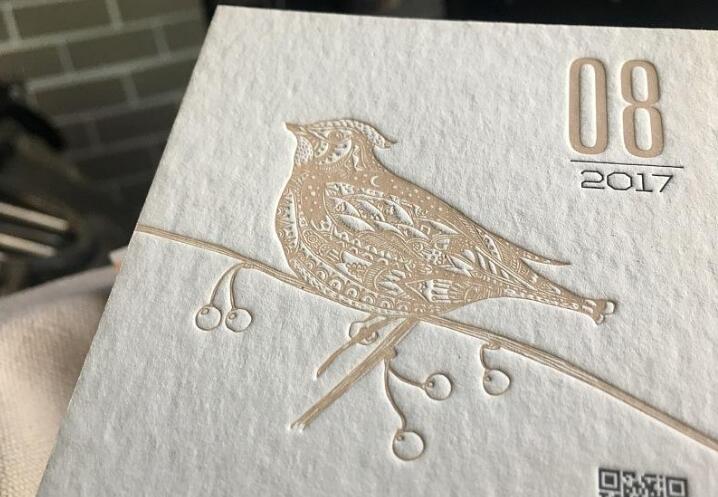
Categories
Hot Products
Custom logo printed luxury round white paper tube empty product packaging round cylinder box for perfume bottles packiging Details about Custom Gift Boxes Packaging Wholesale: One of the major benefits of custom perfume boxes is they add branding value to your products. Branding can be expressed in a variety of ways, including the use of labels, laser etching and even environmentally friendly materials. Your fragrances are left with an attractive and professional feel. It can help you stand out in the competitive market. more
Elegant custom white hot stamping logo luxury rigid beauty perfume bottle packaging gift cardboard paper box with insert Details about Custom Gift Boxes Packaging Wholesale: One of the major benefits of custom perfume boxes is they add branding value to your products. Branding can be expressed in a variety of ways, including the use of labels, laser etching and even environmentally friendly materials. Your fragrances are left with an attractive and professional feel. It can help you stand out in the competitive market. more
Customized luxury essential oil bottle gift cardboard cosmetic drawer paper sample box packaging black perfume boxes Details about Custom Gift Boxes Packaging Wholesale: One of the major benefits of custom perfume boxes is they add branding value to your products. Branding can be expressed in a variety of ways, including the use of labels, laser etching and even environmentally friendly materials. Your fragrances are left with an attractive and professional feel. It can help you stand out in the competitive market. more
Custom design red rigid square solid drawer sliding perfume jewellery gift paper carton cardboard box packaging Details about Custom Gift Boxes Packaging Wholesale: One of the major benefits of custom perfume boxes is they add branding value to your products. Branding can be expressed in a variety of ways, including the use of labels, laser etching and even environmentally friendly materials. Your fragrances are left with an attractive and professional feel. It can help you stand out in the competitive market. more
Custom design rigid square drawer sliding perfume gift paper cardboard box packaging Details about Custom Gift Boxes Packaging Wholesale: One of the major benefits of custom perfume boxes is they add branding value to your products. Branding can be expressed in a variety of ways, including the use of labels, laser etching and even environmentally friendly materials. Your fragrances are left with an attractive and professional feel. It can help you stand out in the competitive market. more
Custom empty luxury gift cardboard drawer box packaging wholesale cosmetic perfume paper boxes Details about Custom Gift Boxes Packaging Wholesale: One of the major benefits of custom perfume boxes is they add branding value to your products. Branding can be expressed in a variety of ways, including the use of labels, laser etching and even environmentally friendly materials. Your fragrances are left with an attractive and professional feel. It can help you stand out in the competitive market. more
Luxury cylinder cosmetic container empty 50ml 100ml round glass perfume atomizer bottle cardboard paper tube gift packaging box Details about Custom Gift Boxes Packaging Wholesale: One of the major benefits of custom perfume boxes is they add branding value to your products. Branding can be expressed in a variety of ways, including the use of labels, laser etching and even environmentally friendly materials. Your fragrances are left with an attractive and professional feel. It can help you stand out in the competitive market. more
Custom Black Special Paper Double Open Door Luxury Insert Eva Cardboard Essential Oil Perfume Bottle Paper Packaging Gift Box Details about Custom Gift Boxes Packaging Wholesale: One of the major benefits of custom perfume boxes is they add branding value to your products. Branding can be expressed in a variety of ways, including the use of labels, laser etching and even environmentally friendly materials. Your fragrances are left with an attractive and professional feel. It can help you stand out in the competitive market. more
Custom logo printed round cylinder perfume bottle cardboard paper box luxury tube perfume gift packaging box Details about Custom Gift Boxes Packaging Wholesale: One of the major benefits of custom perfume boxes is they add branding value to your products. Branding can be expressed in a variety of ways, including the use of labels, laser etching and even environmentally friendly materials. Your fragrances are left with an attractive and professional feel. It can help you stand out in the competitive market. more
Custom Luxury Rigid Magnetic Paper Gift Packaging 30 ml 50 ml 100ml set empty glass perfume bottles with box Details about Custom Gift Boxes Packaging Wholesale: One of the major benefits of custom perfume boxes is they add branding value to your products. Branding can be expressed in a variety of ways, including the use of labels, laser etching and even environmentally friendly materials. Your fragrances are left with an attractive and professional feel. It can help you stand out in the competitive market. more
What are the main types of printing technology
Top&Top Printing Packing Co.,ltd is specialized on printing and packaging for more 10 years.And we are proficient in various printing technologies,mainly product is cosmetic packaging box,paper shopping bags,children board book printing.Here ,we introduce normal printing .
Lithography
The lithographic printing plate is flat and uses the principle of water and oil immiscibility to achieve printing. The printing plate is divided into a lipophilic and hydrophobic graphic portion and a hydrophilic and oleophobic blank portion. In this way, the graphic portion absorbs the ink, and the blank portion does not adsorb the ink. Copy and transfer of graphics and text are done by the imprinter. Lithographic printing is indirect printing, the graphics on the printing plate are first transferred to a cylinder, and then the graphics and text are transferred to the printing material by the inked blanket cylinder. Rolling has good hydrophobic and lipophilic properties, which can fully transfer the ink and limit the transfer of moisture. In addition, the blanket cylinder is elastic and can withstand large printing pressure to ensure the correct transfer and transfer of graphics. Lithography can be multi-colored and colorful. The printing format is large, and the color of the finished product is saturated, with less noise and smudges. The screen is flat. In this respect, it is better than other printing methods. Lithography occupies the largest market in various types of printing in China. Offset printing that designers often contact is Lithography occupies a dominant position in the printing industry.

Relief Printing
The printed part of letterpress printing is higher than the blank part, and when all printed parts are printed on the same plane, apply ink to the printed part. Because the blank part is lower than the printed part, the ink cannot be adhered. The printing plate is contacted, and a certain pressure is applied to transfer the ink of the printing portion on the printing plate to the paper to obtain a printed product. Since the blank portion is concave, the blank portion on the printed matter is slightly protruded when pressed to form a printed product. The surface has inconspicuous unevenness.6. Personalized operation The personalized characteristics of digital printing allow infinite extension of creative design, and it is easy to change the design and produce different batches of printed products without causing increased printing costs.
If you have any questions about your products packaging,please feel free to contact with us.

Established in 2005,SHENZHEN TOP&TOP PRINTING PACKING CO., LTD Located in Shenzhen city, occupied 6800 square meters, and has more than 600 workers. We are a professional enterprise that specializes in developing, designing , producing and selling of printing packing products. Our main products include double paper cosmetic box, printing servic...